I’m a little slow keeping up with things — one day in Atlanta, the next in New York, two days later in Amsterdam. So, let me finish my Atlanta trip with a few pictures and observations.
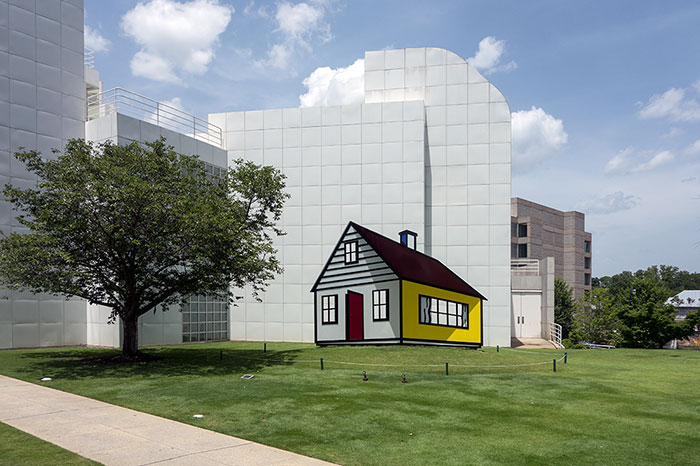
High Museum with Roy Lichtenstein’s “House” — © Brian Rose
While the rest of my son’s baseball team hung out in the pool of their hotel, my son Brendan and I took the Marta train to the High Museum in Atlanta. It’s a wonderful museum with brilliant architecture by Richard Meier. The permanent collection is excellent for a regional museum, and the Alex Katz exhibition of the artist’s less appreciated landscape work, was revelatory.
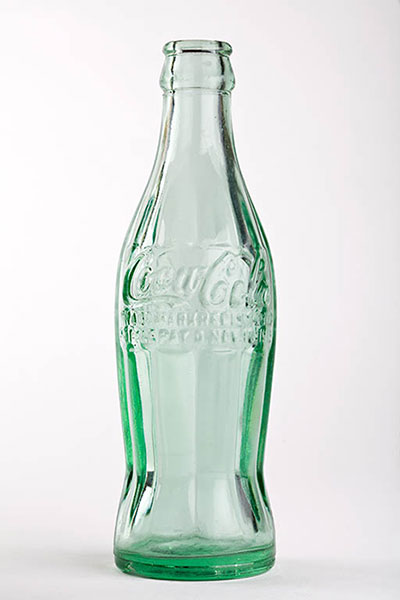
1915 Coca-Cola bottle
Atlanta, being the home of the Coca-Cola corporation, the Coke logo is ubiquitous, and the High Museum had mounted a large exhibition celebrating the 100th anniversary of the iconic Coke bottle. The show included different artists’ takes on the bottle, but also many who incorporated the actual bottle into their work. There was a whole gallery of images by well-known photographers, particularly those attuned to the vernacular, like Walker Evans and southerner William Christenberry. At the center of the show was a gallery of Andy Warhol works all featuring the Coke bottle. I was especially interested (and amused) by several short films featuring former Velvet Underground musicians Lou Reed and Nico taking swigs from Coke bottles.
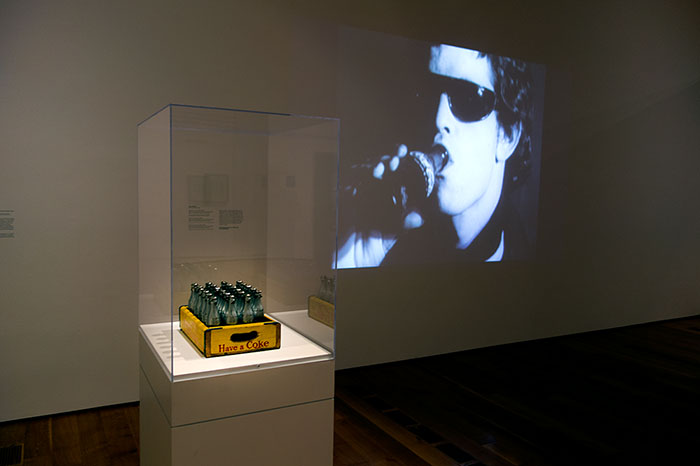
Andy Warhol film and bottles — © Brian Rose
A few days later we visited Cartersville to the northwest of the city, a small town that survived the Civil War mostly intact. We were there looking for a place to eat after one of my son’s tournament baseball games, and despite the preponderance of Chick-fil-A’s and other fast food chains in the suburbs of Atlanta, we did very well all week at local restaurants. Special kudos to Gumbeaux in Douglasville, Georgia, which offered Cajun food that was both delicious and cheap.
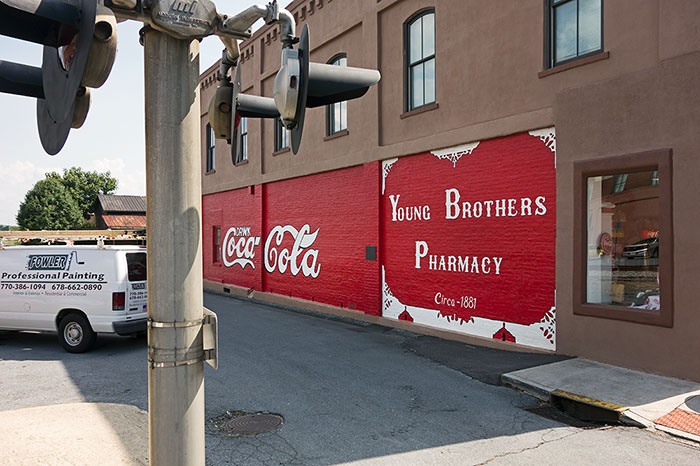
First Coca-Cola wall sign from 1894, Cartersville, Georgia — © Brian Rose
In Cartersville we found a wall painted with a retro-looking Coca-Cola logo that turned out to be the first such mural — painted back in 1894 — of course, restored over the years. We also saw Confederate flags, another historic logo, in the suburbs of Atlanta, usually flying from the backs of pick-up trucks. It had only been a few weeks since the Confederate Battle Flag was removed from the South Carolina capital grounds a few hours away in Columbia, and the issue remains raw. My guess is that most white Georgians feel ambiguous about the flag, and while some may regret its new pariah status, they are also not eager to align themselves with the guys parading it around on pick-up trucks in the parking lot of the Cartersville Walmart, which happened a short time before our visit.
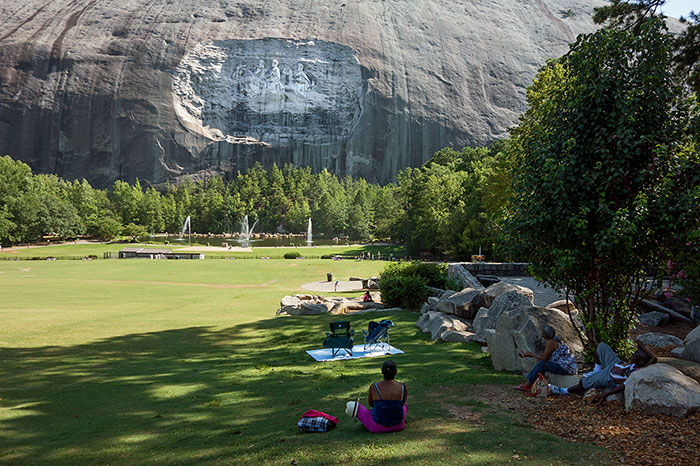
Stone Mountain, Georgia — © Brian Rose
Atlanta is a sophisticated city with a large black population, and to my eyes, one of the most integrated places I’ve experienced. So, the brazen flaunting of racist symbols — like the Confederate Flag — was hard for me to make sense of. On the last day of our visit, Brendan and I drove out to Stone Mountain to see the giant bas-relief sculptures of Confederate heroes carved into the sheer granite wall of the mountain. We listened to an audio description of the carving, which referred to Robert E. Lee as one of South’s most beloved leaders. Like the city of Atlanta itself, there were African Americans everywhere, visitors as well as employees, I recalled Martin Luther King Jr.’s words “let freedom ring from the Stone Mountain of Georgia!” and once again it was all difficult for me to compute
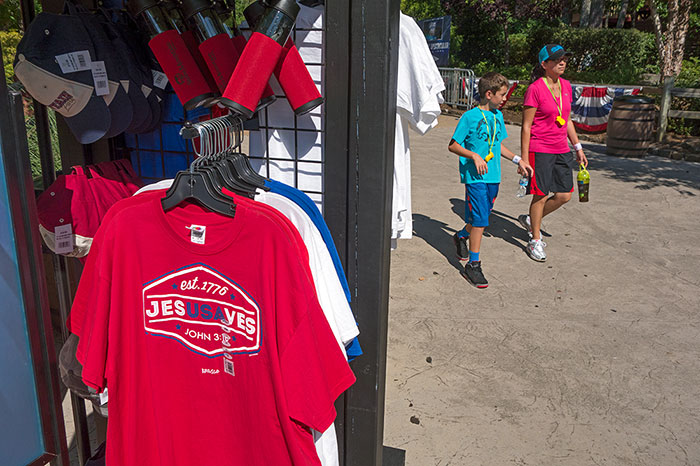 .Stone Mountain, Georgia — © Brian Rose
.Stone Mountain, Georgia — © Brian Rose
Finally, as we were leaving the commercialized them park at the base of the mountain, I snapped a picture of a kiosk selling religious t-shirts and knick knacks. On one of the t-shirts were printed the words: JESUSAVES. And above it: “est. 1776.” Anecdotal evidence of the common conflation of a particular brand of Christianity with the founding of America itself, it’s not unlike the way in which Coca-Cola as a brand, and a logo, has become synonymous with U.S. and its values.
And so ends our visit to Atlanta.